More than just charming getaways, modern log cabins embrace a design philosophy that blends rustic elements with contemporary style, fostering a comfortable and nature-inspired retreat. With their inherent warmth and texture, prebuilt log-wall panels can be the foundation for these cabins, whereas the interior is what makes a cabin feel like a home. It's not just about aesthetics; it's about creating a warm, inviting space that reflects a love of the natural world.
Whether you're renovating an old cabin or dreaming of your mountain retreat built with prefabricated logs, understanding the essentials of log cabin interiors is key to achieving a harmonious design.
Key Elements of Log Cabin Interior Design
Rustic Charm and Modern Amenities
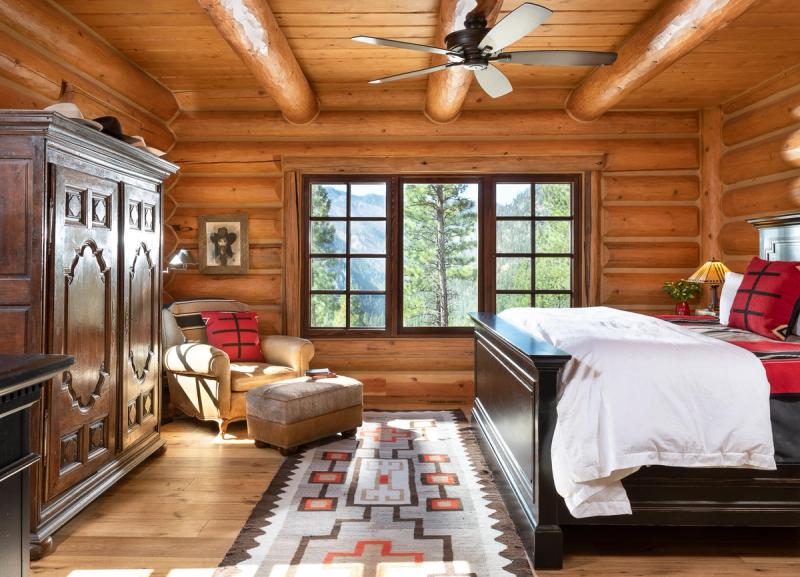
Combining the rustic charm of traditional log cabins with contemporary amenities enhances both comfort and utility. Key elements to consider include:
- Integrating Technology Seamlessly: Modern log cabins often incorporate state-of-the-art technology that complements the natural aesthetic. Examples include built-in audio and modern HVAC systems, integrated discreetly to maintain the rustic vibe.
- Modern Kitchen and Bathrooms: While maintaining rustic wood elements, modern appliances and fixtures provide convenience and efficiency. Features like stainless steel appliances and sleek, modern plumbing fixtures in kitchens and bathrooms align with current trends without clashing with the traditional log cabin feel.
- Dual-Purpose Furnishings: Furniture that doubles as storage helps maintain an uncluttered space, which is crucial in log cabin interiors where space can be at a premium. Items like ottomans with storage or lift-top coffee tables are practical without sacrificing style.
Natural Materials and Color Schemes
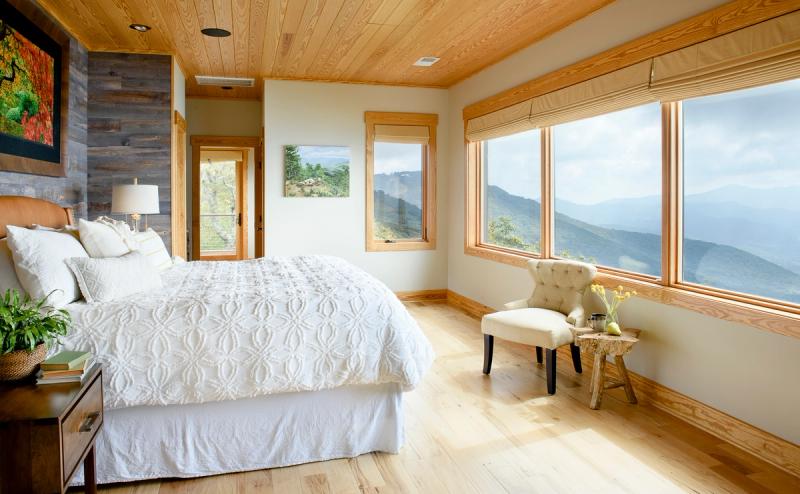
Using natural materials and effective color schemes is pivotal in achieving an authentic log cabin atmosphere. Here are the main considerations:
- Wood Dominance: Log cabin interiors are characterized by the extensive use of wood, from pine and cedar to reclaimed wood. Panelized full log walls provide structural integrity and enhance the space's rustic feel.
- Stone Accents: Incorporating stone fireplaces or stone backsplashes adds texture and ruggedness to the cabin interior. These elements are usually in neutral colors that harmonize with the wooden surroundings.
- Earthy Color Palettes: Log cabin color schemes typically involve earth tones like greens, browns, and beiges. These colors support a seamless transition between the interior space and the natural exterior, reinforcing a connection with nature.
By integrating these essential elements, log cabin interiors can balance rustic allure and modern living standards, ensuring beautiful and highly functional spaces.
Designing Each Room in a Log Cabin
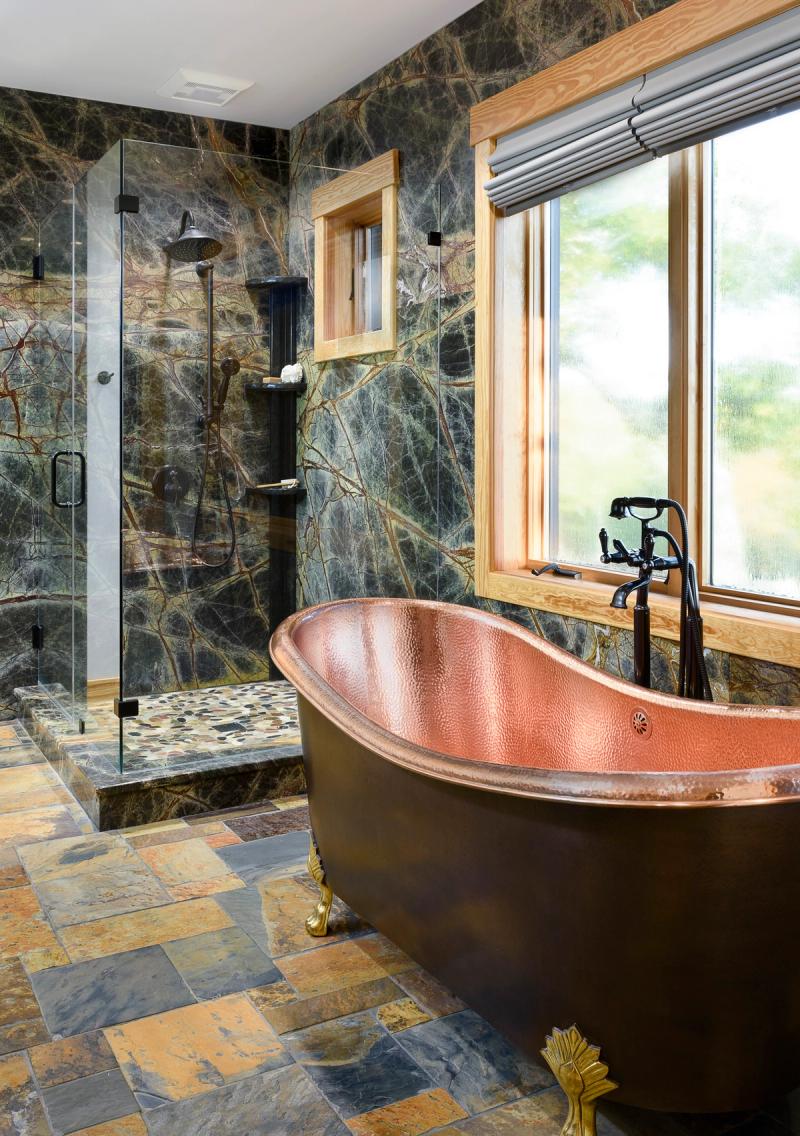
Designing rooms within a log cabin involves thoughtful integration of form and function, aiming to maximize comfort and embody the rustic charm characteristic of such settings. Architects and builders utilize prebuilt log-wall panels to maintain aesthetic coherence and energy efficiency.
Cozy Bedrooms With Natural Warmness
In designing bedrooms for log cabins, the focus is on creating a warm and inviting atmosphere. One employs natural materials such as reclaimed wood and soft, plush textiles to capture warmth without sacrificing elegance. Key features include:
- Timber beams and log-wall panels enhance the rustic appeal.
- Large log cabin windows facilitate natural light.
- Thermal insulation is tailored to decrease energy consumption.
Functional and Inviting Kitchens
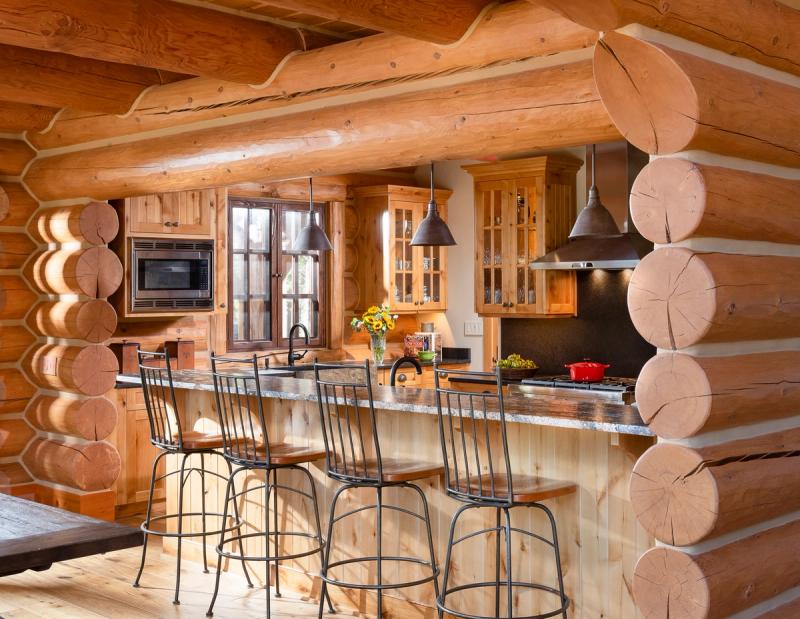
Kitchens in log cabins are pivotal points of the home that combine functionality with rustic aesthetics. Here are the designs that make these kitchens both inviting and practical:
- Custom cabinetry crafted from reclaimed wood for a unique, environmental touch.
- Stone countertops paired with modern appliances to blend tradition with technology.
- An open plan layout featuring a window wall to provide views while cooking or dining.
This setup encourages a seamless flow of activities, from cooking to social gatherings.
Living Rooms with a Rustic Aesthetic

Living rooms within log cabins embody the quintessence of rustic design, reinforcing the connection to nature. Key aspects include:
- Exposed wooden beams and panelized full log walls add structural beauty.
- A central fireplace surrounded by stone creates a natural focal point.
- Furnishings that reflect the natural surroundings are made from durable materials such as leather or wool.
This design strategy ensures a space where comfort meets durability and is perfect for relaxation and family gatherings.
Unique Bathroom Designs for Log Cabins
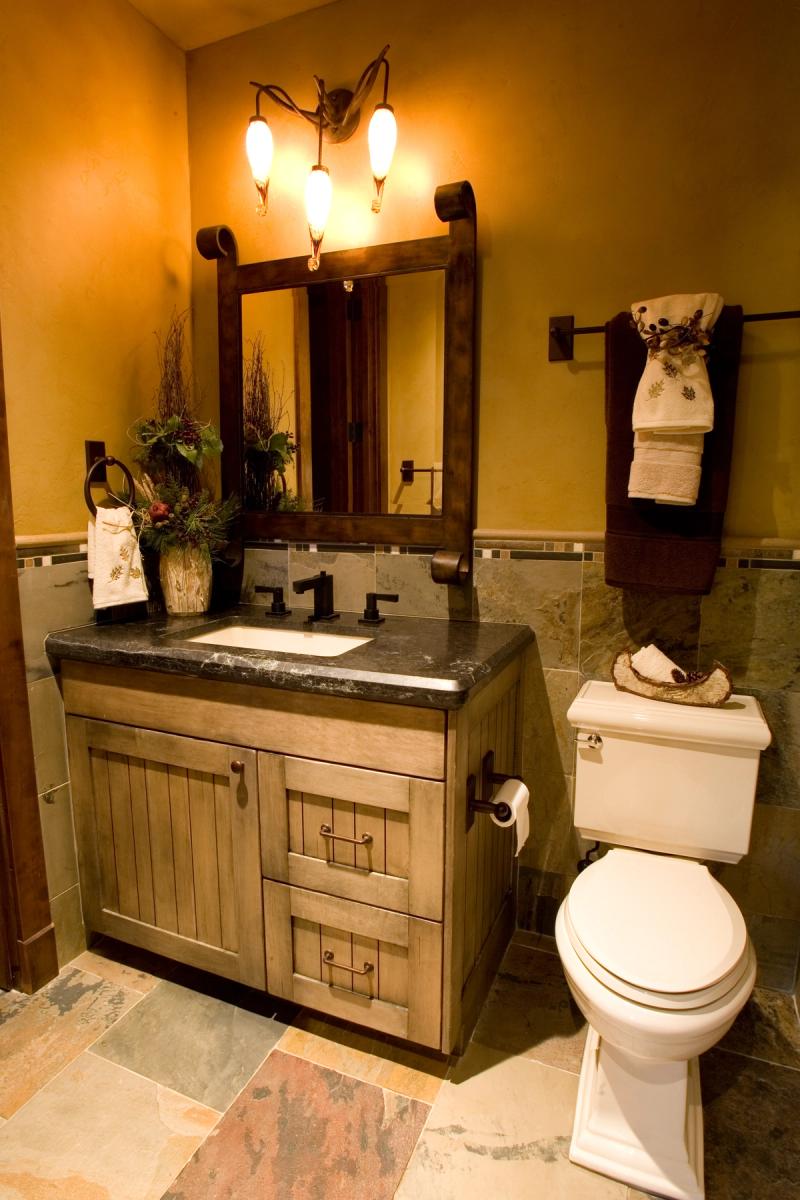
The bathrooms in a log cabin provide a retreat reflecting the home's overall aesthetic while offering modern comforts. Essential design features include:
- Custom vanities made from reclaimed wood give a touch of rustic luxury.
- Eco-friendly fixtures that reduce water use without compromising performance.
- Natural stone tiles contribute to a serene and grounding atmosphere.
These elements combine to craft a visually striking and functionally sophisticated bathroom, ensuring a peaceful refuge within the log cabin.
Lighting and Accessories for Log Cabins
The right lighting and accessories can transform the interior of a log cabin, enhancing its cozy, rustic appeal while incorporating functionality. Carefully selected elements contribute to the overall ambiance and usability of the space.
Choosing the Right Lighting
Selecting appropriate lighting for a log cabin involves more than aesthetics; it involves functionality and energy efficiency. Here are key considerations:
- Layering Light: Incorporate various light layers, including ambient, task, and accent lighting. Ambient lighting provides overall illumination, task lighting supports specific activities like reading or cooking, and accent lighting highlights architectural features or artwork.
- Natural Materials: Choose fixtures from natural materials such as wrought iron, wood, or stone to complement the cabin's rustic elements. These materials blend seamlessly with the log cabin's wood structure.
- LED Options: Opt for LED lights to enhance energy efficiency. Given their thermal insulation properties, LEDs can significantly reduce energy consumption and emit less heat, making them ideal for log cabins.
- Window Placement: Strategically place windows to utilize natural light. Installing windows on both sides of a room can balance the light and make the space feel larger while preserving heat efficiency with thermal window panels.
Selecting Accessories that Complement Wood

Accessories in a log cabin should be chosen to harmonize with the wood's natural beauty while adding functionality. Here’s how to select accessories:
- Textile Textures: Introduce accessories like throw rugs, cushions, and drapes made from natural fibers like wool, cotton, or linen. These textures soften the ruggedness of wood and add layers of warmth.
- Artisan Elements: Include handmade pottery, metalworks, or woven baskets that reflect artisan craftsmanship. Such pieces adorn the space and bring authenticity to the cabin’s aesthetic.
- Eco-friendly Décor: Select environmentally friendly décor items, such as reclaimed wood mirrors or frames, which align with the sustainable nature of log cabin living.
- Harmonizing Colors: Choose colors that complement the wood’s natural tones. Greens, browns, and rusts can enhance the wood's warmth, while cooler colors like blues and grays offer a soothing contrast.
By integrating these specific lighting and accessory choices, homeowners and builders can craft an enchanting rustic and functional log cabin interior that meets modern needs while preserving traditional charm.
Common Challenges in Log Cabin Interior Design
Designing the interior of a log cabin presents unique challenges that blend functionality with the aesthetic value of rustic and modern elements. Addressing these challenges ensures that the space looks appealing and effectively serves practical purposes.
Balancing Rustic and Contemporary Elements
Achieving a harmonious balance between rustic charm and contemporary design in log cabins requires careful consideration:
- Material Selection: Choosing materials that reflect rustic sensibility while accommodating modern quality and efficiency is critical. Reclaimed wood provides sustainability and historical significance, while metal accents offer a contemporary contrast.
- Design Integration: Incorporating prebuilt log-wall panels with modern furnishings like sleek sofas or abstract art bridges the gap between traditional and modern tastes. This integration respects the log cabin's intrinsic character while infusing modern touches.
- Color Palette: A neutral color palette supplemented by bold colors can modernize a space without overwhelming the natural elements. The careful application of color strengthens the visual appeal, making spaces feel inviting and expansive.
Managing Space in Compact Cabins
Maximizing space in smaller log cabins involves strategic planning and smart design choices:
- Functional Furniture: Selecting multipurpose furniture, such as ottomans with storage or wall-mounted desks, optimizes living areas without sacrificing style or comfort.
- Layout Optimization: Implementing an open floor plan enhances the feeling of spaciousness. Log cabin windows can be designed to allow natural light to flood the space, making rooms appear larger.
- Built-In Storage: Utilizing built-in solutions like under-stair storage or custom cabinetry ensures that every inch of the cabin is used efficiently. These solutions maintain the cabin's aesthetic continuity while providing necessary storage.
Together, these strategies address the inherent challenges in log cabin interior design, enhancing utility and aesthetic value.
Conclusion
Crafting the perfect log cabin interior requires a thoughtful blend of rustic charm and modern convenience. Homeowners can create inviting and environmentally conscious spaces by integrating natural materials and sustainable building techniques. The strategic use of lighting and carefully chosen accessories further enhances the aesthetic appeal while maintaining the cabin's cozy atmosphere. Whether optimizing a compact space or balancing traditional and contemporary styles, the key lies in thoughtful design and attention to detail. Embracing these principles will ensure your log cabin remains a beloved retreat for years.
Project Management
Lead Designer & CAD Technician
After graduating with a Master's Degree in Wood Engineering, Milan started his career by traveling abroad to apprentice with Brian Schafer, Principal of Big Cabin. As an expert in the industry for over a decade now, his passion for log and timber home construction grew deeply throughout his career and ingrained his knowledge of drafting, project management, and roofing design.